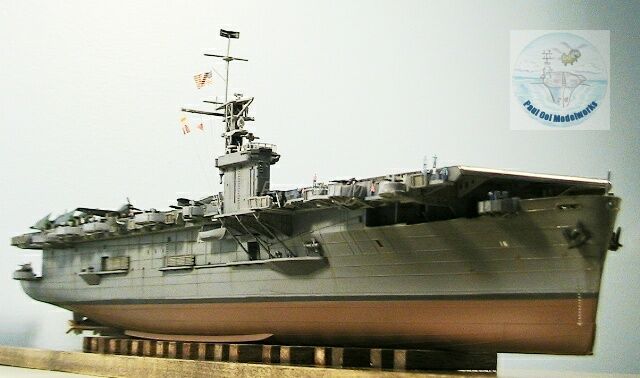
During WW2, the United States built many small aircraft carriers, nicknamed “jeep carriers” that helped to project American air power into many areas of naval combat that the larger full-sized carriers were not involved in. The CVE or escort carriers were instrumental in hounding and destroying the German U-boat threat, being able to stay close to the convoys in sufficient numbers since they were smaller and cheaper to build. These carriers also provided close support for landing ships, ferrying aircraft to different island bases and were sometimes co-opted as amphibious assault staging vessels.The USS Nassau CVE-16 (not to be confused with the more recent Tarawa-class LHA-4 of the same name) was one of 11 Bogue-class escort carriers that entered service with the US Navy. Built on a cargo ship hull, the USS Nassau was affectionately called the “Little Princess” by her crew and served exclusively in the Pacific theater.
Gallery:
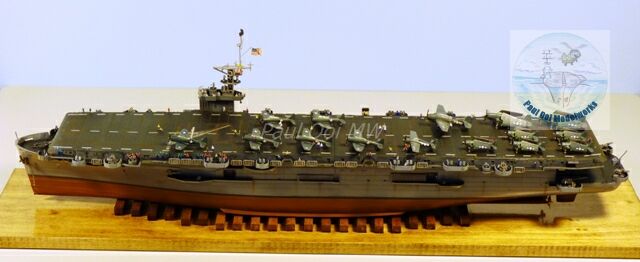
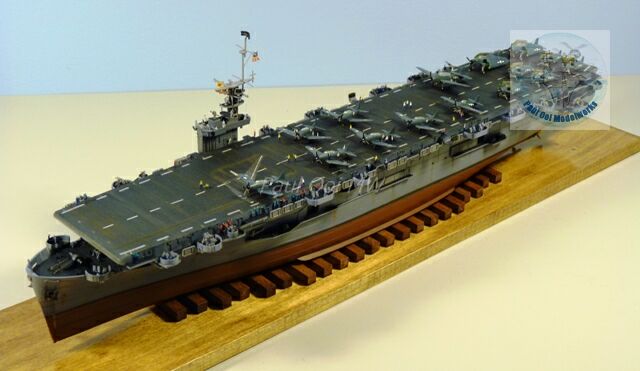
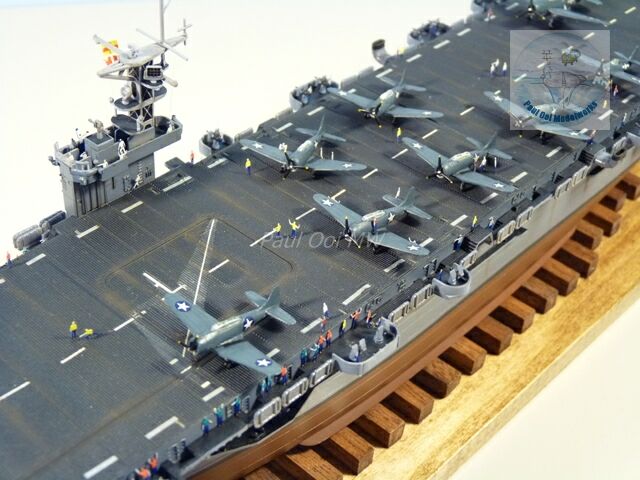
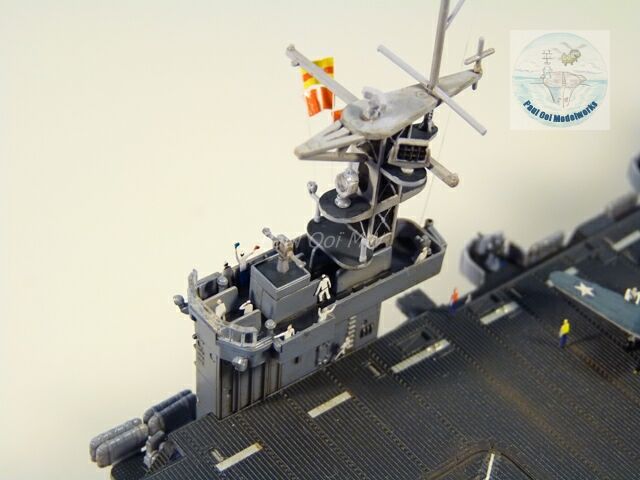
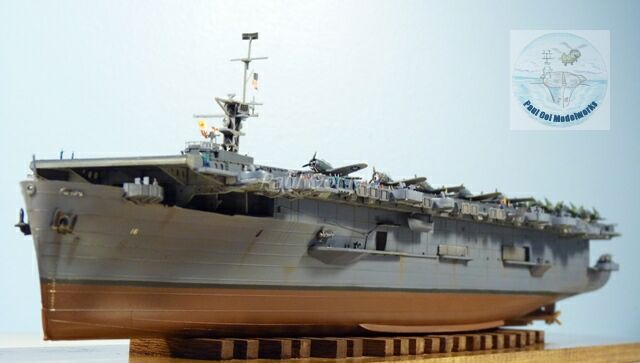
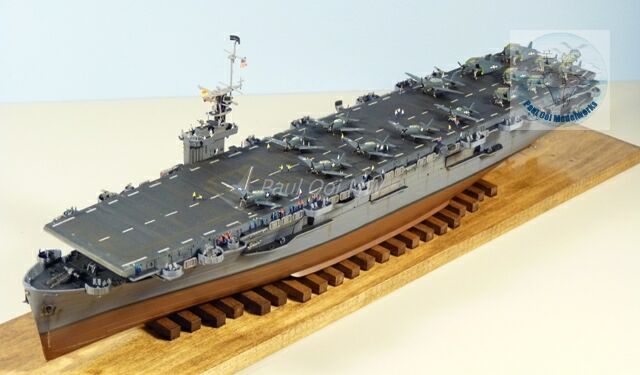
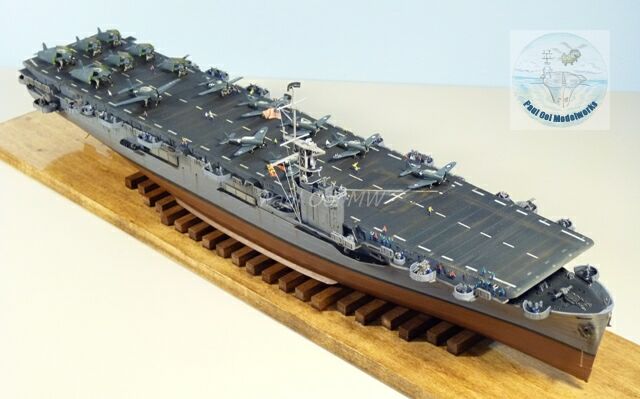
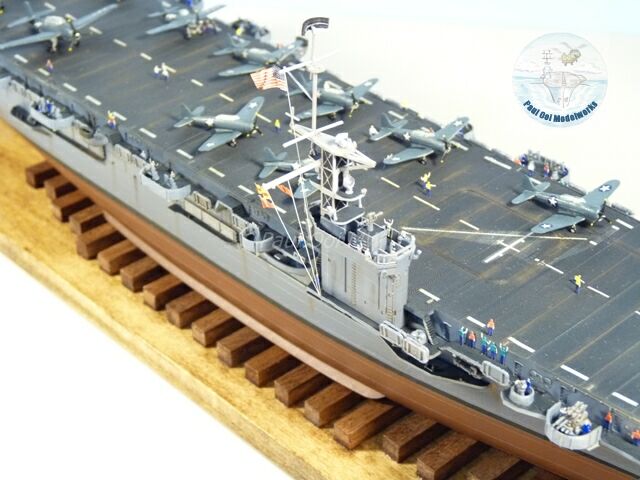
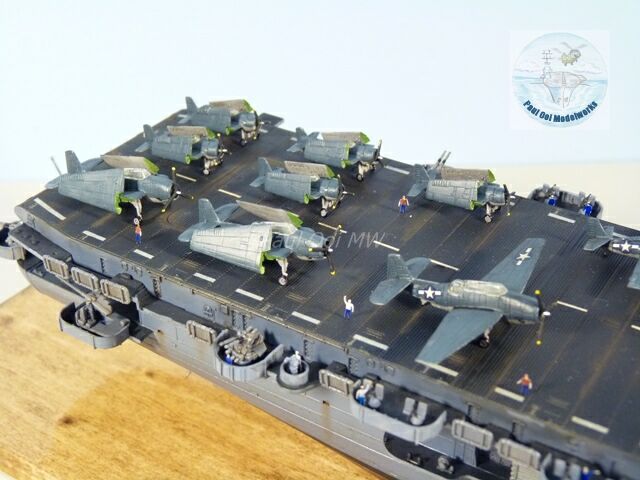
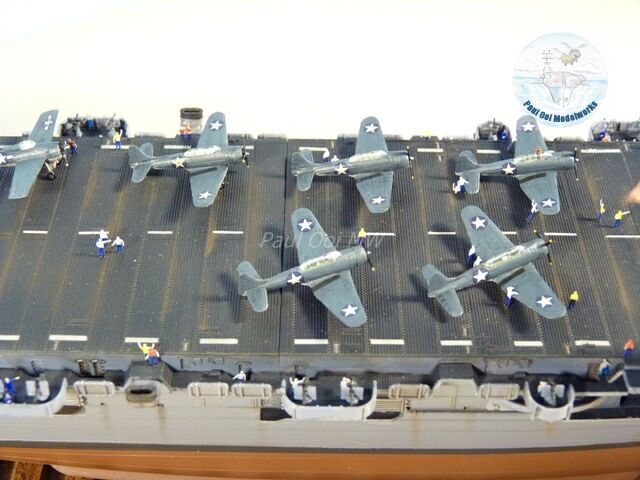
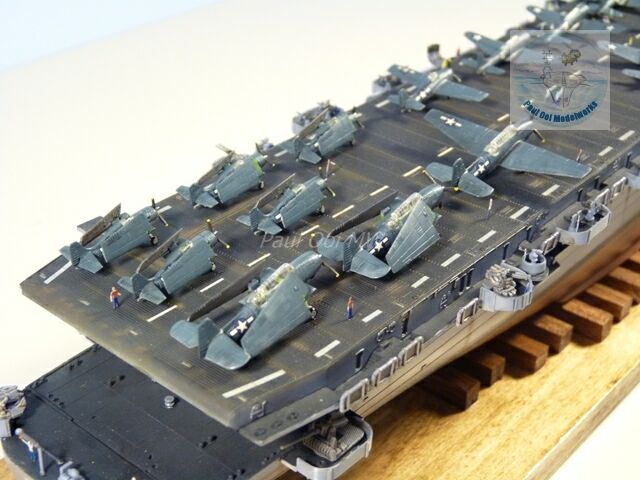
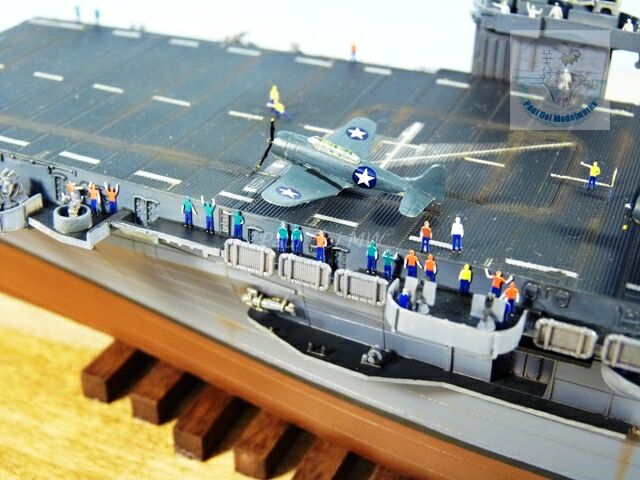
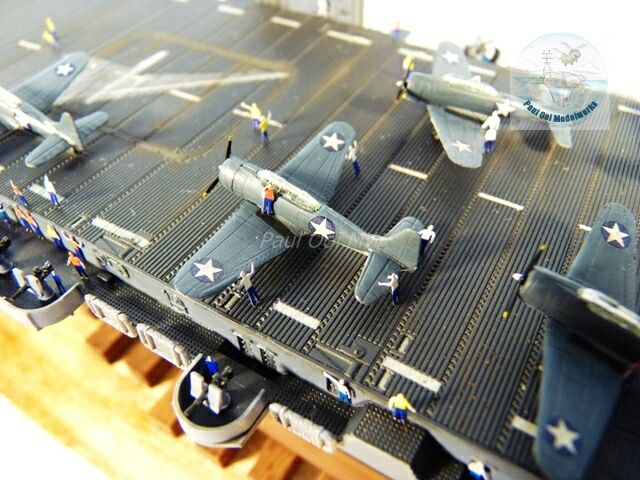
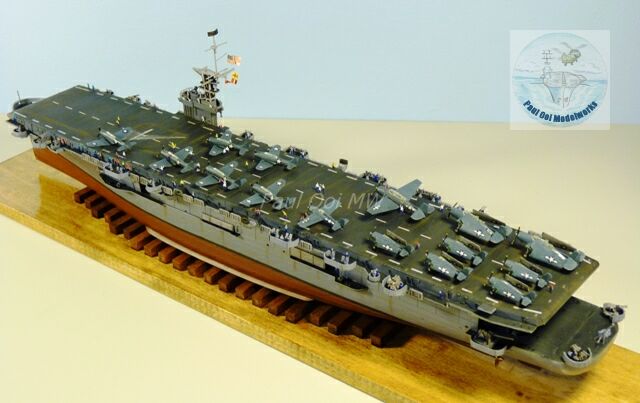
Construction Notes:
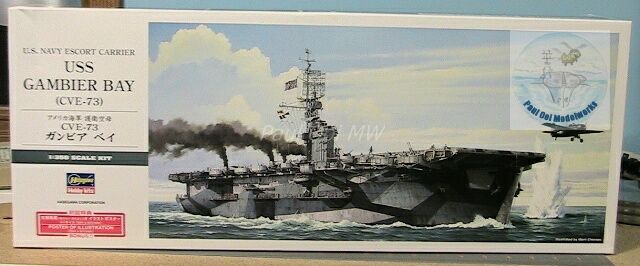
A customer wanted to commemorate a member of the family who had served on board the Nassau as she was initially fitted and serving near Pearl Harbor in the fall of 1942. He chose the 1/350th scale Hasegawa USS Gambier as the base kit for conversion work into the earlier Bogue class configuration. This was an out-of-box build using the kit parts with no photoetched detailing or rigging (we will still make her pretty :)!). The kit had most the parts to “re-shuffle” from the later Casablanca class configuration to make the Nassau with the key exception of the rounded stern section.The customer also wanted more aircraft to populate the deck, since Hasegawa provided only 6 Wildcats and 3 TBF Avengers. I decided to add another 6 Douglas SBD Dauntless, to make a deck aircraft complement that was very typical of late 1942 jeep carriers. The vessel was painted in Measure MS14 Ocean Grey scheme during that period.
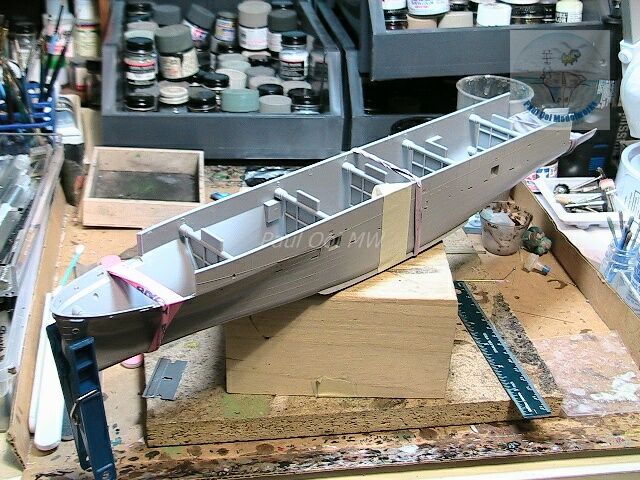
The initial work was to put together the large hull sections together with the reinforcement bulkheads. This resulted in a very sturdy hull which made it easy to handle for the significant body work ahead.
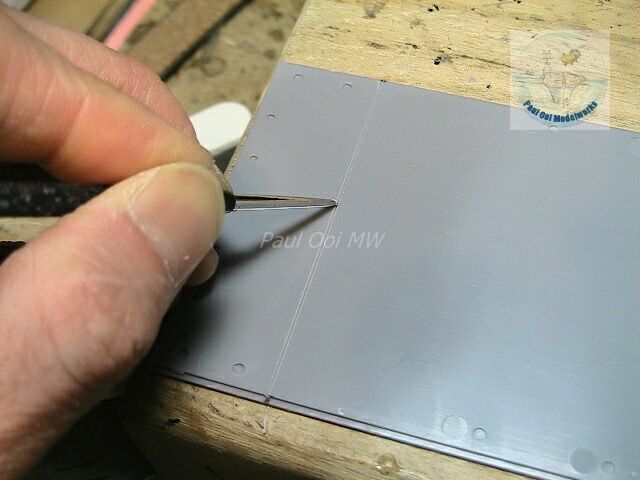
The conversion work began with cutting off about 2cm of the the mid-section of the flight deck where the sides are parallel. This is equivalent to about 7 meters in real life as the Nassau had a shorter flight deck than the later Casablanca class ships. This is important because the appearance of the forward area for the Nassau shows the edge of the flight deck drawn back, revealing more of the forecastle and also the presence of 2 gun emplacements in the exposed area. The latter would not be possible with the Casablanca class flight deck overhang.
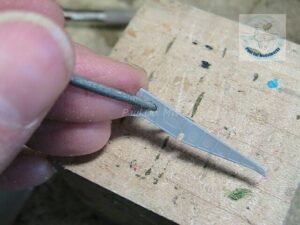
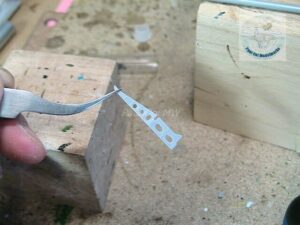
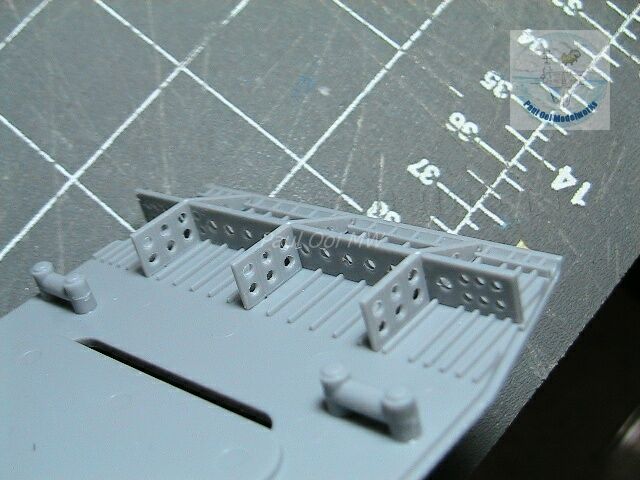
Detailing of the flight deck supports was long and tedious. The kit parts had molded detail of the support port holes but some how Hasegawa did not see it fit to perforate them like the real things. Using my Dremel power toll and a rat-tail file, I carefully pierced almost 40 round and oval holes into the support plates, but the results are well worth the effort.
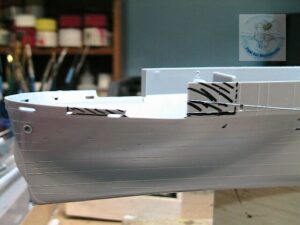
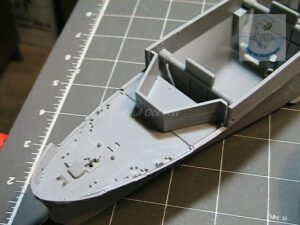
The next major slice-and-dice was the hull itself. To continue with the forward features, the exposed deck created by the shorter flight deck required filling in the deck of the forecastle with plastic card stock and moving the forward bulkhead the same 2 cm backwards. The area shaded in black ink had to be removed using a microsaw. I also removed a section of the sheer wall on both sides of the forecastle above the freeboard to accommodate the gun emplacements.
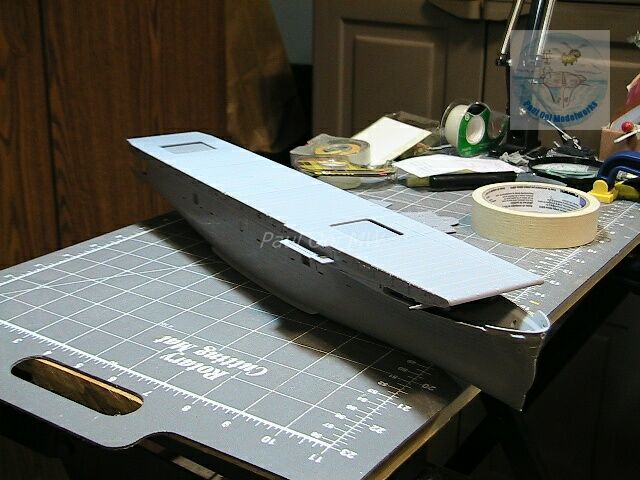
A trial fit between the shortened flight deck and the renovated hull confirmed the assembly.
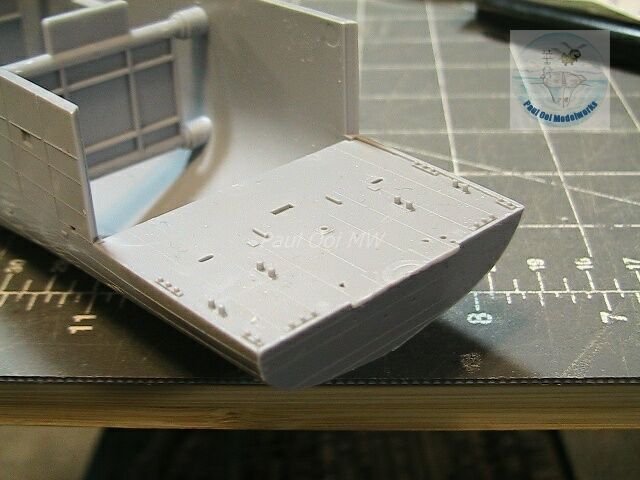
For hull work, I left the most difficult for the last. The Casablanca class stern was shaped as a transom with the flat profile that made it easier to construct in the mid- to late war period. The Nassau had a combination of a fantail shape with some curvature similar to a cruiser. Given the highly curved sections involved, any attempt to re-tool the plastic sections leading to the fantail into the extreme pointed stern of the historical prototype would have been risky. I decided to carve a cruiser shaped wooden stern as a compromise that would fit nicely to the transom profile.
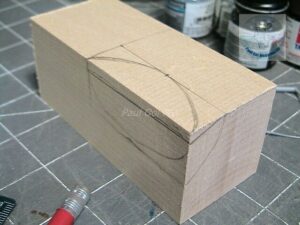
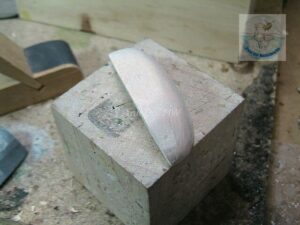
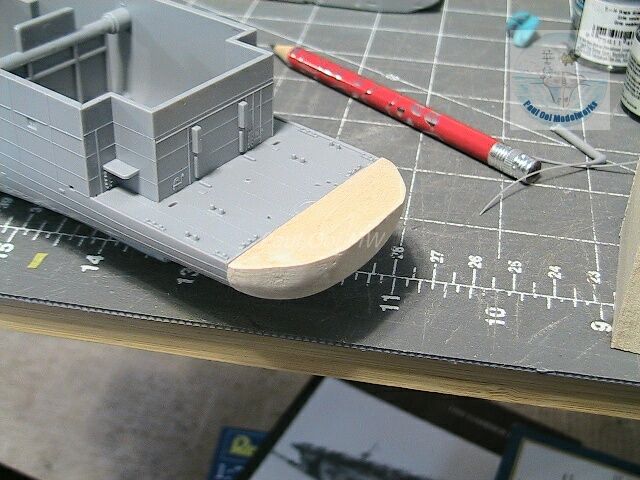
Starting with a block of carving bass wood, the shape of the bow is carefully traced with pencil, and test fitted multiple times against the curvature of the hull. Once the cutting started, there was little to no room for error. I made a shape slightly over-sized around the edges so that I can file down to fit flushed against the transom stern. Finishing was done using sandpaper starting from medium grade 100 and working my way down to super fine 400.
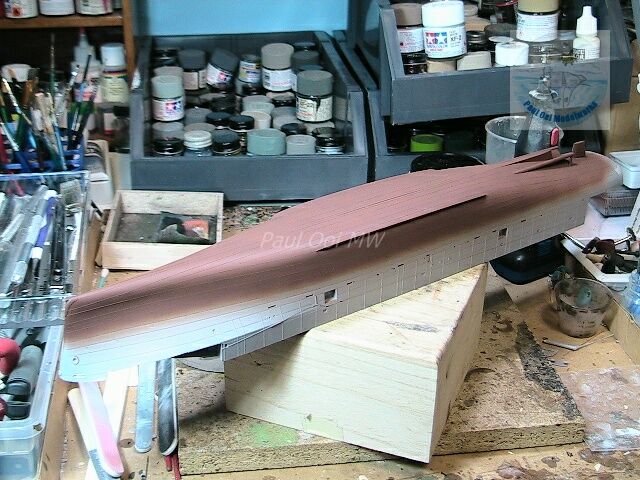
With the hull assembly completed, the painting began with the underside painted with Tamiya Red Brown XF64.
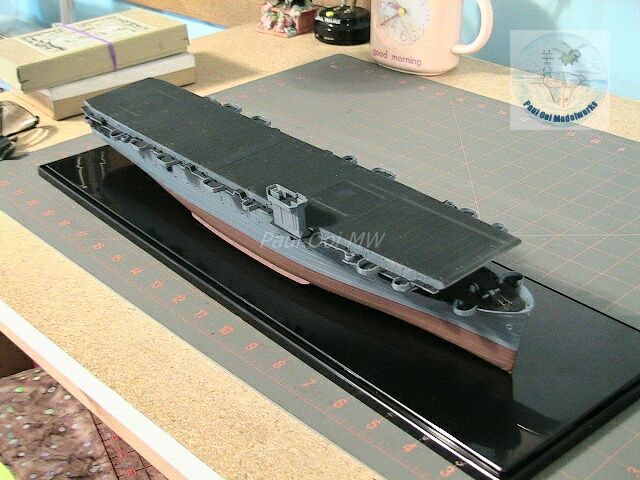
This is followed by Ocean Grey O-5 by Testors Acrylic for the main hull, followed by Testors Deck Blue FS35042 for all deck surfaces.
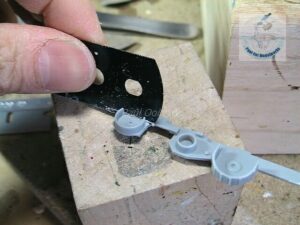
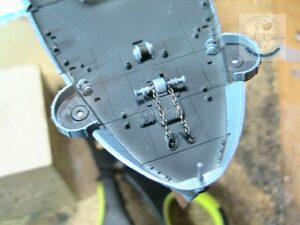
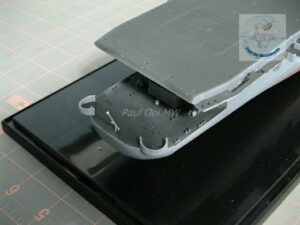
While the hull was drying, I started working on “shuffling” the gun platforms and emplacements. The 1942 fit of the Nassau was quite different from the late war fit and also different from the Casablanca class fit from the kit. I used a fine saw to carefully slice off some 40mm Bofors gun tubs from the side emplacements and recycled them for the bow and stern emplacements.
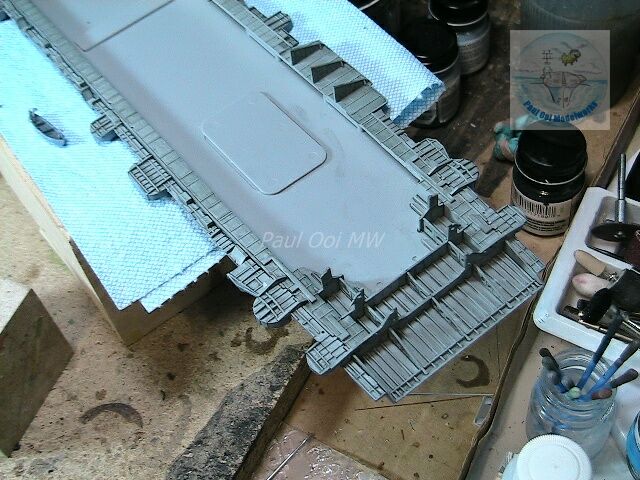
Before attaching the flight deck to the hull permanently, I detailed the underside surfaces and applied a wash of burnt umber + dark grey.
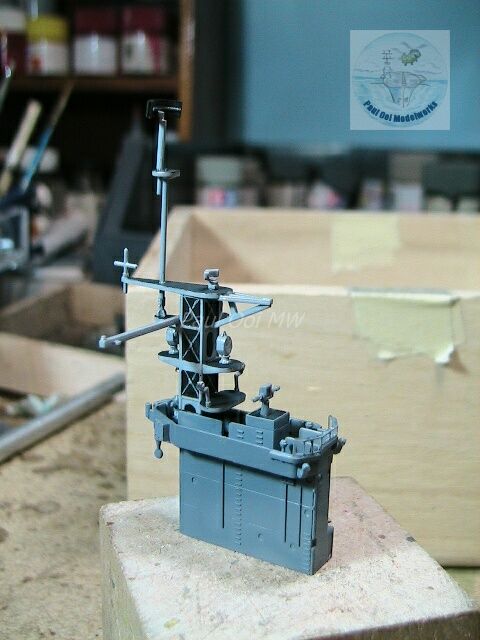
The island and the main mast assembly was carefully put together. One could easily botch up the main mast with the interlocking sections. The parts fitted together very nicely. The late war “bed springs” air-search radar was never fitted to the Nasssau so that was omitted.
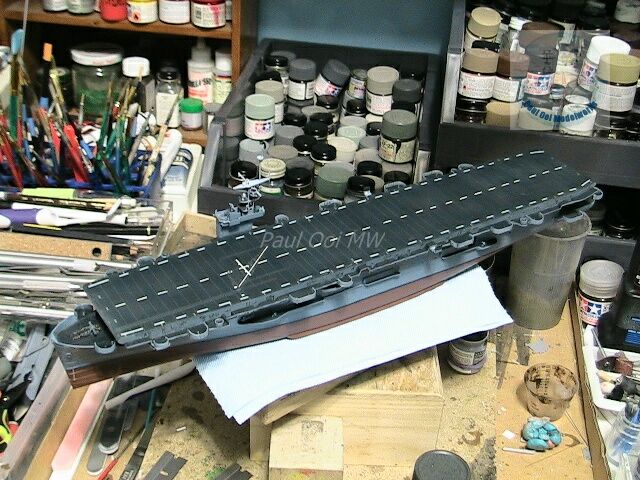
With the hull and island fitted together, I applied the deck decals and also the number decals for the Nassau. The ship name was painted in white letters at the stern.
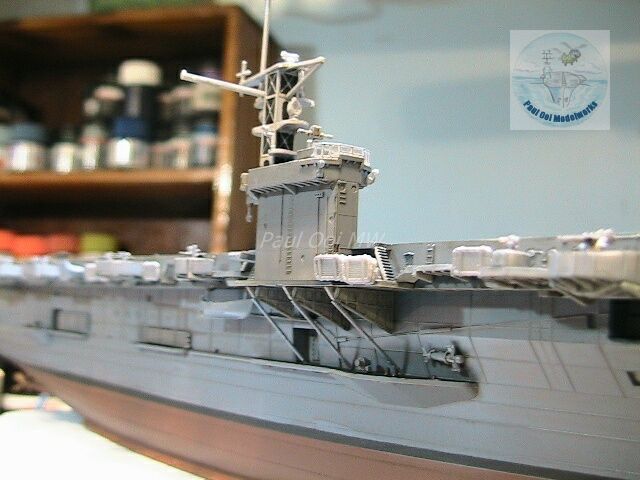
Further hull details were the addition of the island overhanging supports using scrap plastic. These were present in the Nassau and not found in the Casablanca class.
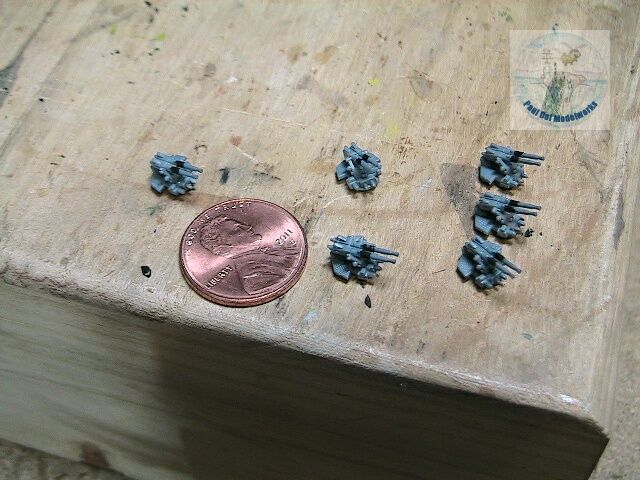
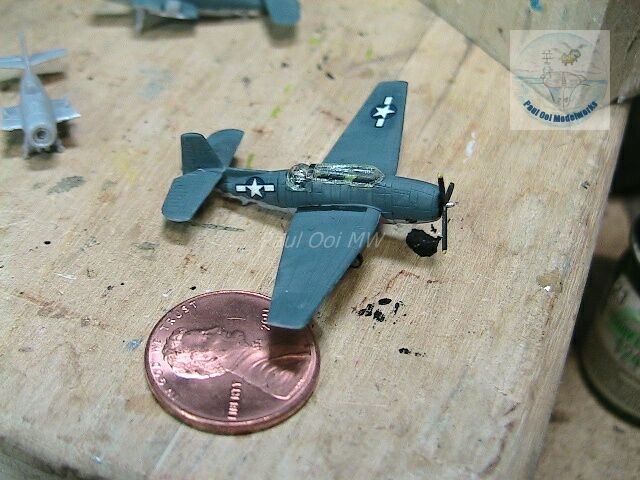
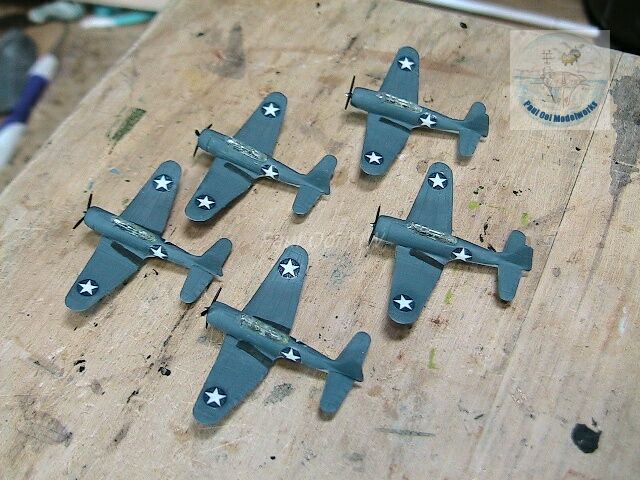
Finally, the “mighty bits” that make up the small but very important details in the ship model are assembled and painted. One can see the size comparison of the 40mm Bofor AA guns, the TBF Avenger and the flight of SBD avengers, all compared to the size of a US 1-cent coin.
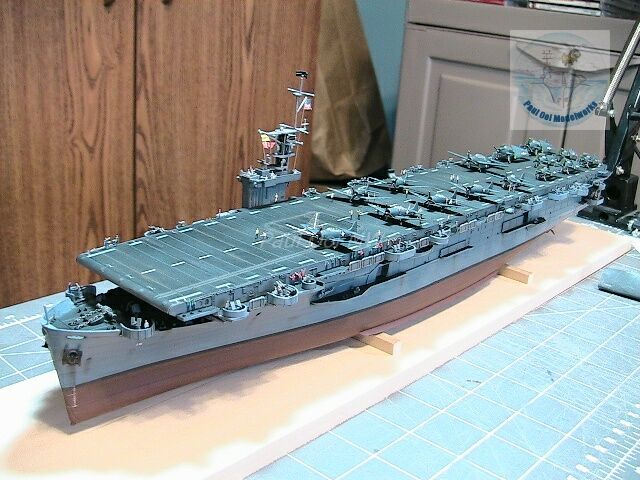
I trial fitted the placement of the aircraft, checking photographs of jeep carriers which were very different from the full-sized carriers. For starters, the escort carriers were between 1/2 to 1/3 the length of the full-sized carriers and rolling take-offs were not possible for a fully loaded and fueled aircraft. Instead they used a new invention called the steam-powered catapult mounted on the port side forward flight deck. As such, aircraft clustered closer to the island because they were being prepared for the catapult queue, unlike their larger Essex class cousins where the aircraft sat aft and used the length of the flight decks for rolling take-offs. it is ironic that the the modern super carriers of today resemble the jeep carriers more than the full-sized WW2 carriers with their use of twin catapults in the forward section of the flight deck.
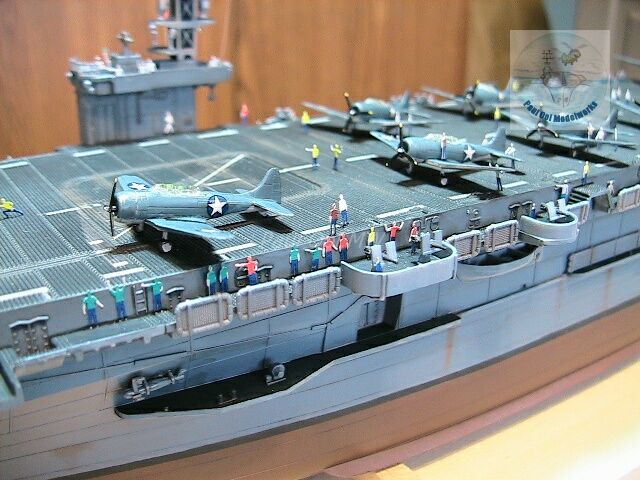
The final work done on the ship was to add the photoetched deck crew with their colorful uniforms.
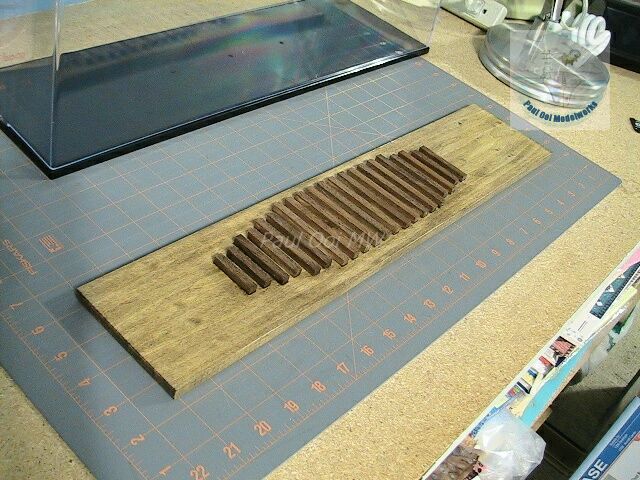
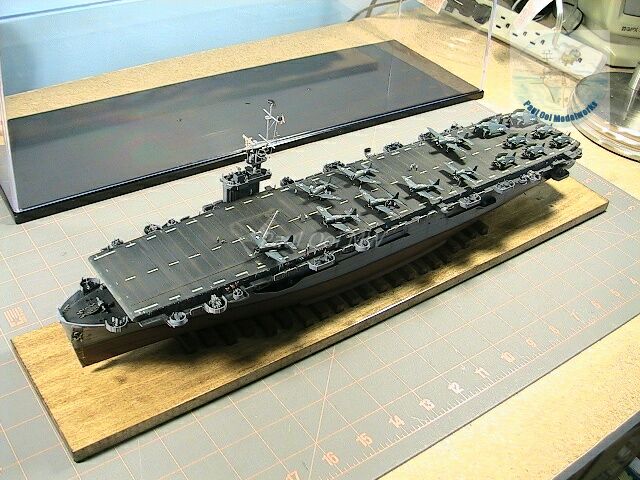
With the wooden base and the dry dock ship blocks (the topic of a future tutorial) completed, the ship gets permanently mounted for display.
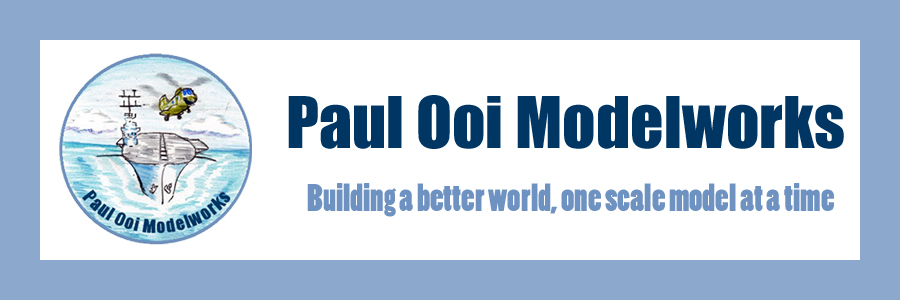

My Dad, Walter George Graham AOM3c and other members with FAW-8 was aboard the Nassau in June 1943 while intransit from San Diego to Australia. He told us that the Nassau was to have ferrried him and others to his duty station in the Celebes, but she had developed a leak during the trip severe enough to require return to the states for repair. Great to see what this vessel looked like. My Dad just passed away last month, it would have been fun to show him this excellent model. Thanks much.
My dad, James A. Brickett, was a Lt. JG who served as an LSO on the Nassau from October 1943 until September 1945. I have plenty of his photos and am delighted to see this model made with such care and attention to detail.
Dear Anne,
I am glad you think so. It is always a pleasure to know that my models bring delight to ex-servicemen and their families.
Paul
My Dad,Calvin Walsh, was a Fireman 1 on the Nassau, also affectionately known as the “Nasty Maru”! Worked in the bowels of the ship. Got to look pretty ugly as war ended.
Hello Scott,
My hats off to your Dad. I have spent time in the lower decks near the bilge pumps and the heavy oil engines, nasty!
Paul
My Father was a radio/radar man aboard this Ship. He referred to her as the “Nasty Maru”.
I would be interested to know what the cost of a model like this would be.
My Dad was a S2C/S1C on the Nassau from 11/8/1943 until sometime in 1945. He was a “Taxi Driver” for the planes and worked with landings/take-offs. He never told me much about the runs she made or the planes. Was proud, but didn’t speak a lot about the war. He passed in 1988. I have uncovered so much history and wish he was here to share it with me. I think he would have been amazed and awed (as I am!) at the beautifully detailed legacy of “The Little Princess.” Thank you for sharing!
Glad that you like it.
Paul
Hello Paul! My dad, James B. Files, was on the USS Nassau sometime from 1942-1945. I am going to go through his papers that I found to know the exacts. He didn’t talk too much about the war until his last ten years. I lost him in 1998. He became an M.D. and he loved gardening, flying, woodworking and studying his Bible. I am so happy to see his ship and the effort you have put into this beautiful model and it’s memory. Thank you so much.